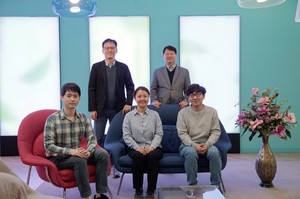
[라이센스뉴스 황지원 기자] Researchers from UNIST (President Yong-Hoon Lee) and Korea Institute of Energy Research (Chief Kim Jong-nam) have renewed the world’s highest efficiency of Perovskite solar cells.
Perovskite solar cells are next-generation cells that are expected to significantly lower the cost of solar power generation. The research results were published on April 5 in Nature, the most prestigious international scientific journal.
UNIST Prof. Jin-young Kim’s team and Dr. Dong-Seok Kim’s research team at the Korea Institute of Energy Research together with researchers at the Lausanne Institute of Technology (EPFL) in Switzerland developed a perovskite solar cell with an efficiency of 25.6% converting sunlight into electricity.
It is the highest among the perovskite solar cell efficiencies officially reported in the paper. The researchers improved efficiency by changing the constituent elements of perovskite, the core material of batteries, to a new approach.
This research is expected to be helpful in the development of photoelectric devices such as next-generation displays based on perovskite materials.
Perovskite is a substance having a regular three-dimensional structure (crystal) by combining one anion and two cations. Easy to synthesize and inexpensive. This is why perovskite solar cells are expected to lower the cost of solar power generation.
However, the efficiency of solar cells using this material is still less than that of commercial (silicon) solar cells, and durability is also poor. In order to improve this, research has been actively conducted to improve the efficiency and stability of materials by changing the combination of cations.
The joint research team improved battery efficiency and durability by replacing some of the anions (solution content of 2%) that make up the perovskite with a material called formate (HCOO-). Formate helps the regular three-dimensional structure inside the perovskite material to grow firmly.
This is because the formate interacts with the metal cation to strengthen the bonding force. If you use a material that has a regular three-dimensional structure (a material with excellent crystallinity), the battery efficiency is high. In fact, the efficiency is improved by more than 10% compared to the perovskite battery without the formate added.
Professor Jin-young Kim (Department of Energy and Chemical Engineering) at UNIST said, “We broke the stereotype that only iodine (I-) or bromine (Br-) ions can be used for negative ions.” ”Explained.
The first author, Dr. Jae-Gi Jeong (now Lausanne Institute of Technology), explained, “It is of great academic significance in that it was the first in the world to discover that formate can interact with surrounding elements at the site of anions in perovskite crystals.” .
Send SNS articles
